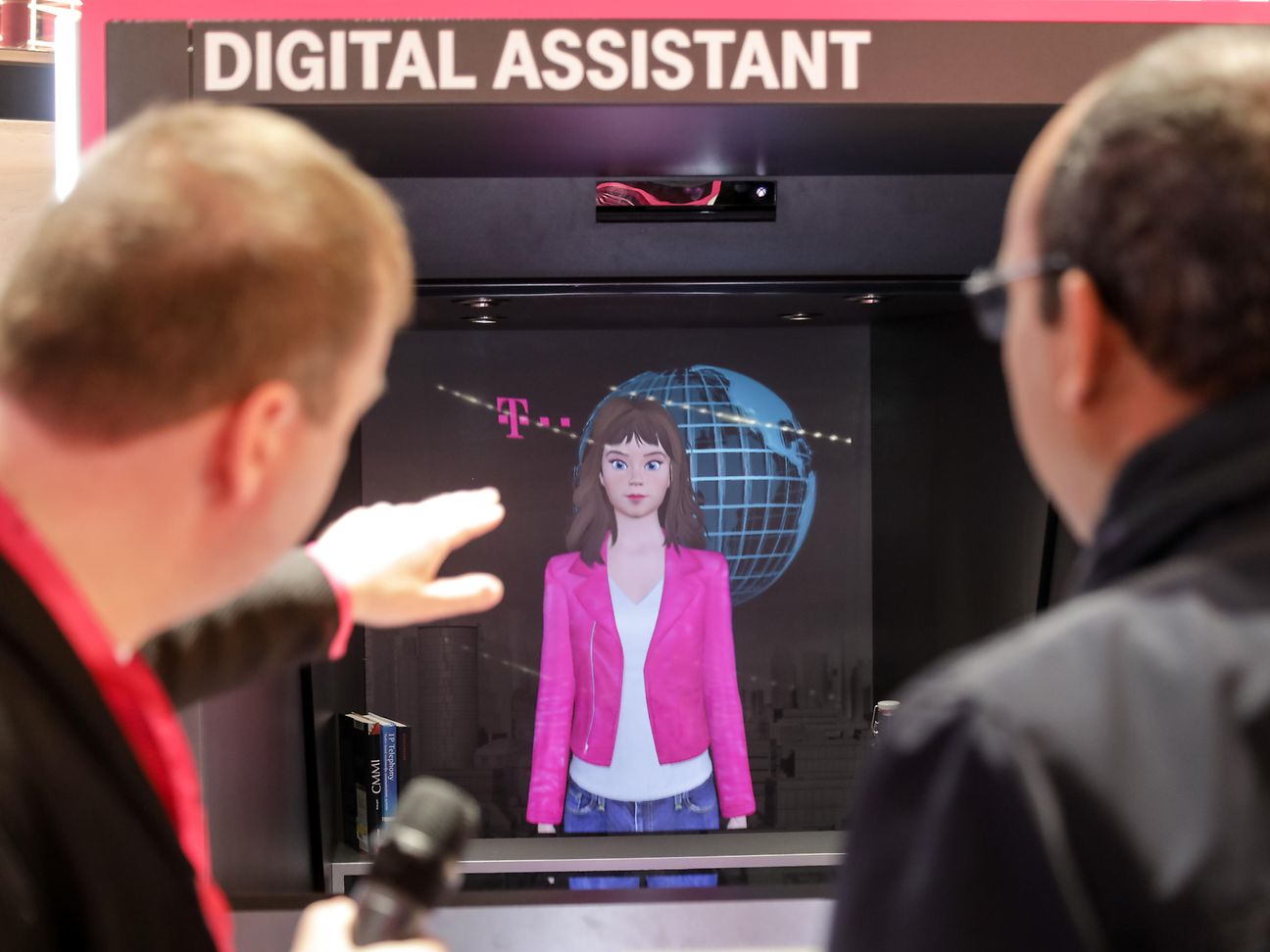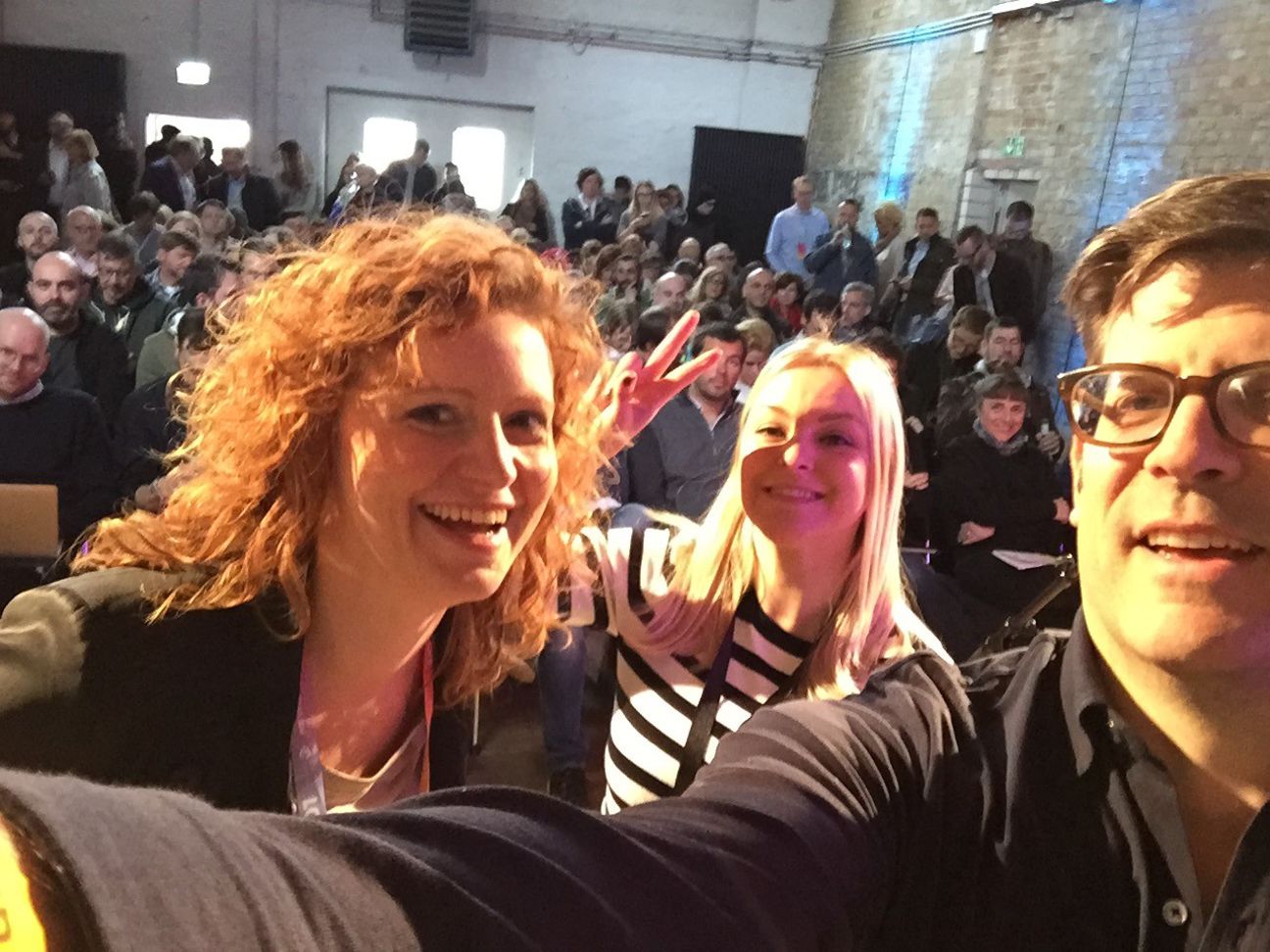

Chatbots – the communicator's little helpers
"Chatbots, the communicator's little helpers" was the title of a talk that Stephanie Tönjes, Lena Raschke and I gave at this year's re:publica.
The topic generated enormous interest: people were sitting on the floor and the room had to be closed due to overcrowding – apparently we struck the right cord. Due to this response – and also because of the lively discussion and many questions raised following our talk – I decided to summarize the whole thing again in a blog post. I'd like to take this opportunity to thank all the participants at re:publica once again for giving us so much valuable input. But first things first: We work for Corporate Communications at Deutsche Telekom. Our main task is to keep employees and interested parties informed about the company's activities. That includes all communication that is not of a commercial nature, i.e., characterized by advertisements or spots.
In recent years, the work of those employed in corporate communications departments has changed radically. What we do used to be called press work and public relations. The target groups were clearly defined and mainly constituted journalists outside the company and employees within it. News was disseminated in a very one-dimensional way. When I started 20 years ago, press releases were sent by fax and employee communications were via the notice board or an employee magazine that appeared once a month.
Today, everything is different. At Deutsche Telekom we supply around 25 different channels to get news to the public and our workforce in real time. The digital transformation has made this possible and greatly facilitated the dissemination of information. Where complicated technology used to be required, a simple smartphone is now usually enough. This change is a blessing for us communicators because we can inform our target groups in a much more direct and targeted manner. It also enables us to tap quite different target groups, ones we would previously never have reached as we had no direct channel to them (fax distribution lists are finite after all ...). And, best of all, we can enter into a direct dialog with them – something that, from a technical point of view, would previously not have been possible.
At the same time, the rising number of channels and target groups makes it harder to meet the latter's diverse expectations. Communities have to be maintained, just as relationships need to be maintained in the non-virtual world. While this is not so fundamentally different from the pre-digital world, the number of communities and target groups that have to be kept up is a lot higher. Whereas, depending on the company in question, it used to be just the top 30 journalists, it is now large communities with several thousand or even 10,000 followers.
As the communications departments have generally not grown in the same measure as their target audiences, you have to think carefully about how you allocate resources. The next logical step is to consider automating responses to standard inquiries, and this is where bots and artificial intelligence (AI) come into play.
Many people have reservations when asked whether they would like to be informed by a bot. Though that is understandable, they probably wouldn't even notice the difference if a bot answered their question about when they will have fast Internet access.
It is precisely for this reason that we at Deutsche Telekom are experimenting with bots, including in the communications department. The advantages are obvious: Instead of wasting time answering very simple questions that are raised repeatedly by large numbers of people, you have more time to focus on more complicated matters.
That is why we showed the audience in Berlin how our prototype bot works. Just like Quartz and Resi, the bot draws you into a dialog and offers you communication products that are tailored to your needs. We use Facebook Messenger for this purpose and can imagine also disseminating information via chatbots in the future. The prototype bot is still very simple and cannot answer questions yet, but we must make that our goal. (And experience teaches us that technology progresses much faster than we can imagine.)
Someone in Berlin asked us a very interesting question in this context: whether bots will one day replace human communicators and render them superfluous? That raises the question of whether bots will ever be as good at their job as humans. Well, we assume that that is ultimately a question of computing power and, given that the latter gets cheaper and cheaper over time according to Moore's Law, bots should in fact be able to compete with humans in the foreseeable future. For me, it is not a question of if and when that will actually happen, but of how to make use of the intervening period. The problem I have with this question is the negative underlying attitude that it often betrays: bots will probably put me out of work at some point in the future, so I'd better not have anything to do with them. But it works the other way round: To begin with, bots can help me perform my work in a better, more targeted manner. We must not let latent fears cause us to neglect the opportunities that bots offer communicators. Whether we like it or not, chatbots are coming. That's why, for me, it's not a question of whether I help shape this trend or try and ignore it. What do you think? Please use the comment function and share your opinions with me.

An overview – How Deutsche Telekom uses Artificial Intelligence (AI)
At Deutsche Telekom, development of AI systems is an important priority. Instead of buying "off-the-shelf" AI systems and robots, which can be expensive, Deutsche Telekom is developing its own AI solutions. And it is testing AI-based software, computers, voice control functions and chatbots, with a view to making customer service more efficient, for consumers and corporate customers alike.

